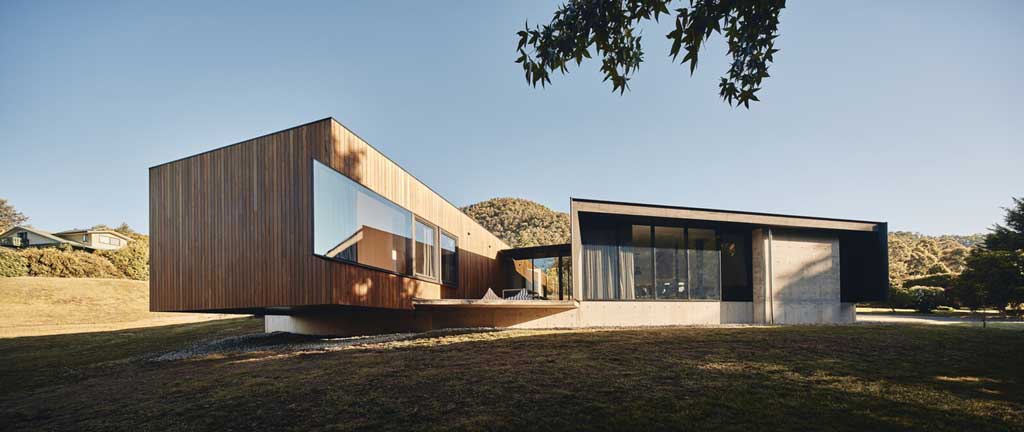In the ever-evolving world of architectural design, materials and techniques often come and go, but some leave an indelible mark, shaping the future of the industry. Vertical cedar cladding is one such innovation, seamlessly blending the rustic charm of wood with modern design sensibilities. As a testament to nature’s beauty and the ingenuity of human craftsmanship, vertical cedar cladding is redefining exterior aesthetics, ushering in a new wave of design that’s both sustainable and visually captivating.
Cedar’s Natural Elegance
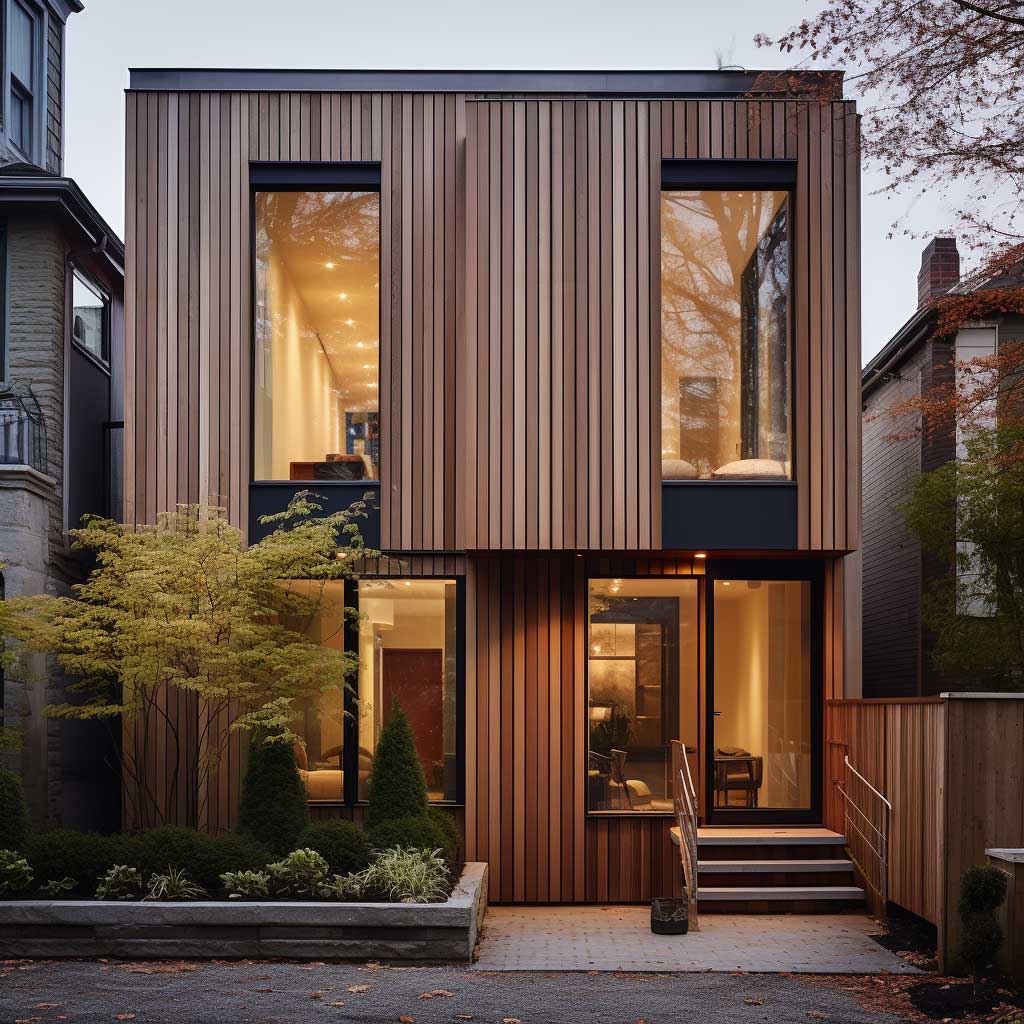

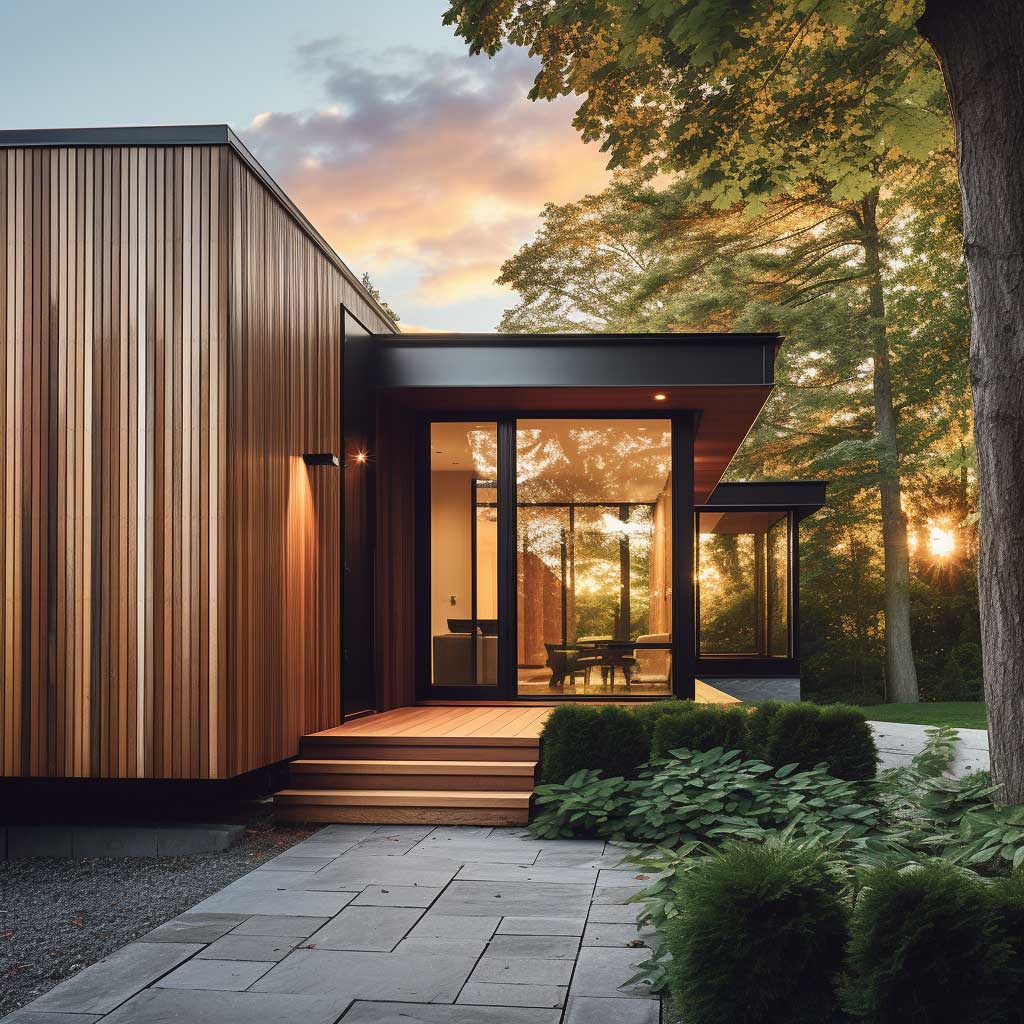
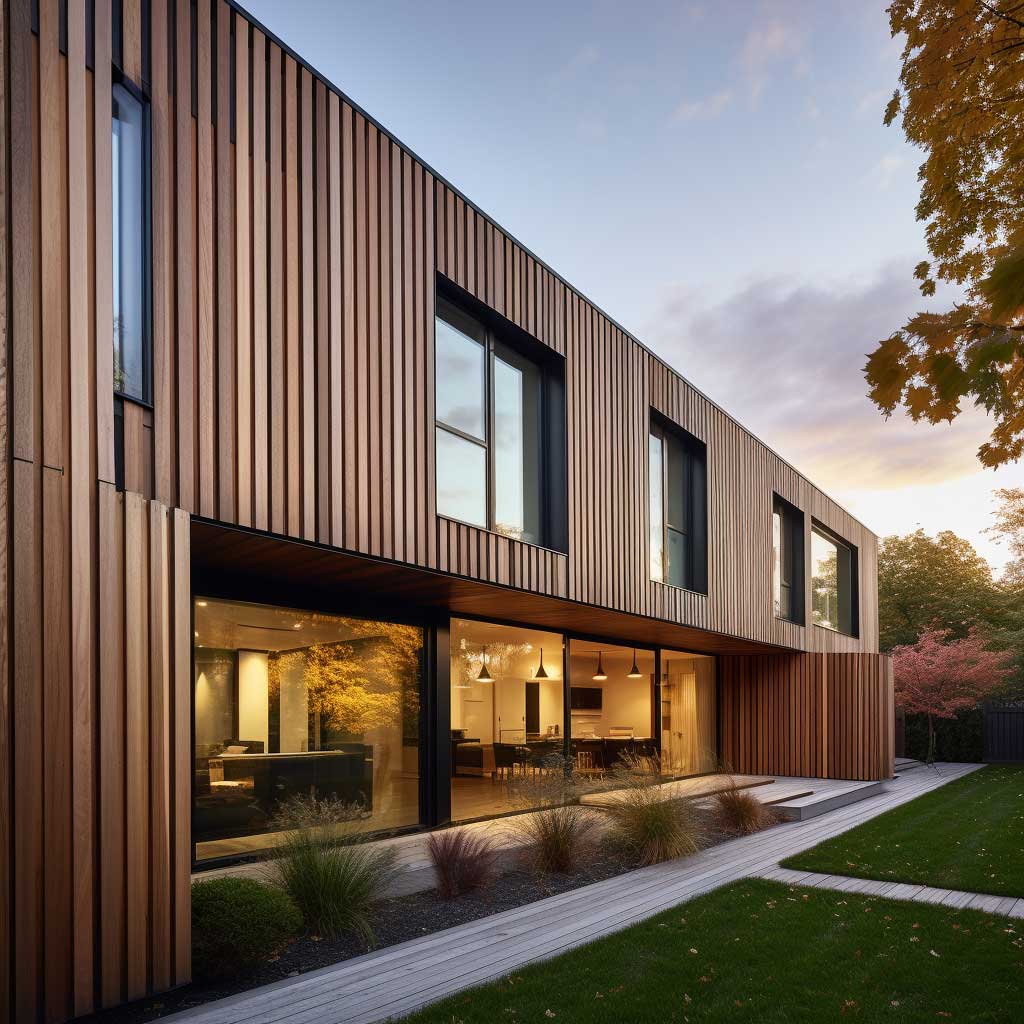
The architectural world is constantly evolving, with new materials and techniques emerging to redefine spaces. Among these innovations, vertical cedar cladding stands out, offering a unique blend of tradition and modernity. The natural elegance of cedar, with its rich tones and intricate grain patterns, brings a touch of nature to contemporary designs, creating exteriors that are both visually captivating and environmentally friendly.
Cedar has been used in construction for centuries, revered for its durability, resistance to decay, and aesthetic appeal. Its natural oils act as preservatives, ensuring longevity even in the harshest of climates. But beyond its functional attributes, cedar offers an unparalleled beauty. The wood’s rich hues, ranging from reddish-brown to pale yellow, create a warm and inviting ambiance. Its intricate grain patterns, each unique and distinct, tell tales of nature’s artistry.
While cedar’s use in construction is age-old, the technique of vertical cladding brings a fresh perspective. By arranging the cedar planks vertically, designers create an illusion of height, making structures appear taller and more majestic. This orientation also offers practical benefits, aiding in water runoff and minimizing potential damage from the elements.
One of the standout features of vertical cedar cladding is its ability to harmonize with the surroundings. Whether it’s a home nestled in the woods or a modern city building, cedar cladding allows the structure to blend seamlessly with its environment. This natural integration is especially crucial in today’s world, where there’s a growing emphasis on sustainable and eco-friendly design. Cedar, being a renewable resource, aligns with this ethos, offering a cladding solution that’s both green and gorgeous.
The natural elegance of cedar offers designers a versatile palette to work with. Depending on the desired look, cedar can be left untreated, allowing it to age gracefully and attain a beautiful silver-gray patina over time. Alternatively, it can be stained or painted to achieve specific color tones. This flexibility ensures that vertical cedar cladding can cater to a wide range of design preferences, from rustic to contemporary.
Vertical cedar cladding, with its blend of natural elegance and modern design principles, is revolutionizing the world of exterior aesthetics. It offers architects and homeowners a cladding solution that’s not only visually stunning but also sustainable and durable. As the architectural world continues to evolve, seeking materials that offer a balance of beauty and functionality, cedar’s natural elegance will undoubtedly remain a favored choice, gracing exteriors with its timeless charm.
Sustainability Meets Style


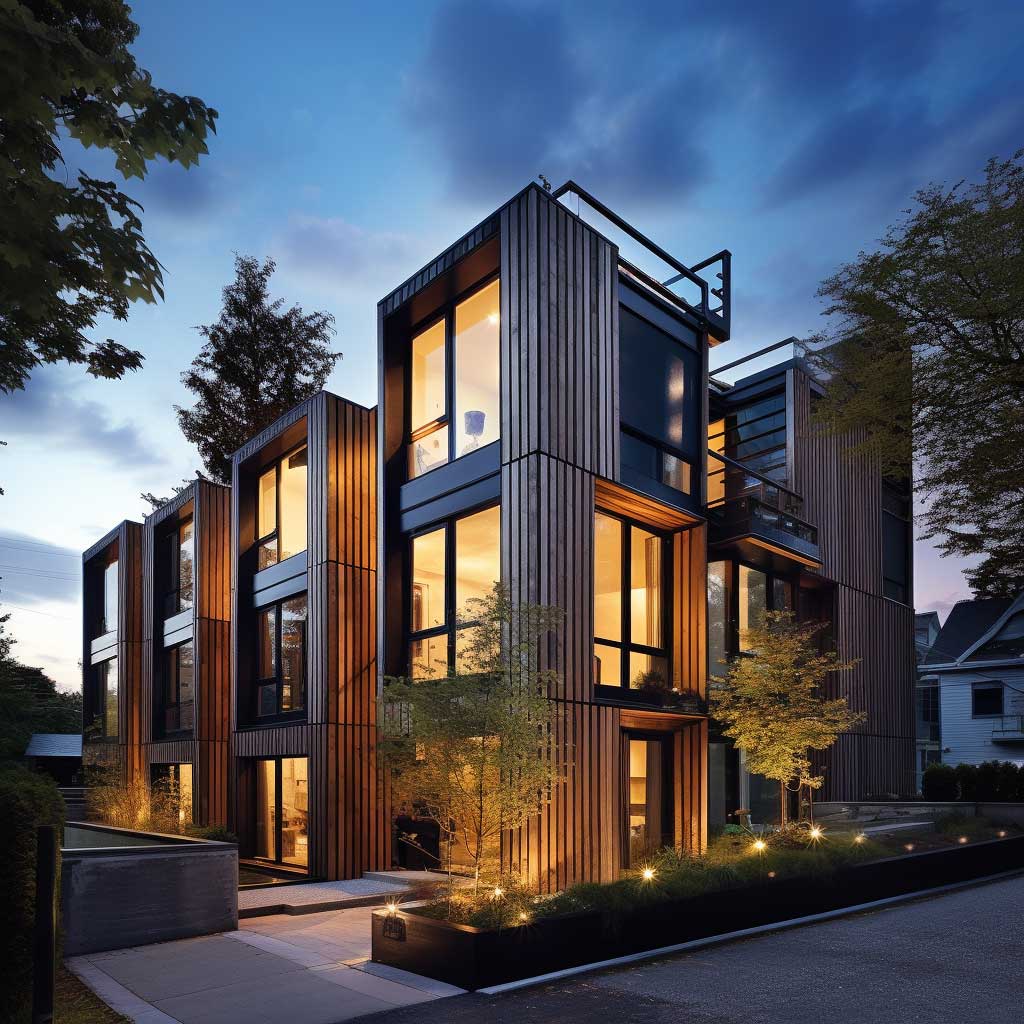

In the modern architectural landscape, there’s a growing emphasis on sustainable design. Vertical cedar cladding emerges as a frontrunner in this movement, offering an eco-friendly solution without compromising on aesthetics. The fusion of sustainability with style is evident in structures adorned with cedar, showcasing how responsible choices can lead to breathtaking designs.
Cedar trees have long been celebrated for their rapid growth and ability to thrive in various climates. This fast regeneration makes cedar a renewable resource, ensuring that its use in construction has a minimal environmental footprint. Moreover, cedar’s natural resistance to pests and decay reduces the need for chemical treatments, further solidifying its eco-friendly credentials.
Vertical cedar cladding is not just about being environmentally responsible; it’s about creating structures that are visually stunning. The vertical orientation of the cedar planks adds a contemporary flair, while the wood’s natural tones bring warmth and elegance. This combination ensures that buildings clad in cedar are not only sustainable but also architectural masterpieces.
Beyond its sustainable sourcing, cedar offers practical benefits in terms of energy efficiency. The wood acts as a natural insulator, helping regulate indoor temperatures. In colder months, cedar-clad homes retain heat more effectively, reducing the reliance on artificial heating. Conversely, during warmer periods, these homes remain cooler, minimizing the need for air conditioning. This energy efficiency not only reduces carbon footprints but also leads to significant savings in utility bills.
Sustainability is not just about the here and now; it’s about making choices that stand the test of time. Vertical cedar cladding, with its durability and resistance to external elements, promises longevity. Buildings adorned with cedar require minimal maintenance, ensuring that they remain timeless both in terms of design and structure.
The intersection of sustainability and style is beautifully embodied in vertical cedar cladding. As the architectural world grapples with the challenges of climate change and environmental conservation, cedar offers a beacon of hope. It showcases that responsible choices can lead to designs that are not only eco-friendly but also aesthetically unparalleled. As we move towards a future where sustainability is paramount, vertical cedar cladding will undoubtedly play a pivotal role, shaping exteriors that are both green and grand.
Modern Homes with a Rustic Touch




The architectural realm often witnesses a dance between the old and the new, where traditions intertwine with modern innovations. Vertical cedar cladding has emerged as a symbol of this fusion, bringing the rustic charm of wood into contemporary home designs. This blend of modernity with tradition offers homeowners a unique aesthetic, where the comforts of the present meet the nostalgia of the past.
Wood, as a construction material, has been cherished for millennia. Its natural warmth, texture, and versatility have made it a favorite across cultures and eras. Cedar, with its distinct grain patterns and rich hues, epitomizes this timeless appeal. When incorporated into modern homes through vertical cladding, cedar introduces a rustic touch, creating a bridge between the home’s contemporary design and nature’s age-old beauty.
Contemporary home designs often lean towards minimalism, clean lines, and open spaces. These design principles, while sleek and elegant, can sometimes feel cold or impersonal. Vertical cedar cladding disrupts this potential starkness. The wood’s natural imperfections, its knots, and varied tones, introduce character and depth. The vertical orientation of the planks adds a dynamic element, drawing the eye upwards and emphasizing the home’s architectural features.
Modern homes, especially those located in natural settings like forests, mountains, or coastal areas, benefit immensely from vertical cedar cladding. The wood allows the structure to blend seamlessly with its surroundings, creating a harmonious balance between the built and the natural environment. This symbiotic relationship enhances the home’s aesthetic appeal while also offering residents a deeper connection to nature.
While cedar cladding introduces a rustic touch, it doesn’t compromise on the conveniences of modern living. Cedar is naturally resistant to decay, pests, and moisture, reducing the need for frequent maintenance. Modern treatments and finishes can further enhance the wood’s durability, ensuring that the rustic charm doesn’t come at the cost of practicality.
Vertical cedar cladding is a testament to the magic that happens when modern design meets traditional materials. It offers homeowners the best of both worlds – the sleekness of contemporary architecture and the warmth of rustic wood. As modern homes continue to seek a balance between innovation and tradition, vertical cedar cladding will remain at the forefront, offering designs that are both visually captivating and deeply rooted in nature’s beauty.
Innovative Cedar Patterns




In the realm of vertical cedar cladding, innovation knows no bounds. Architects and designers are constantly pushing the envelope, experimenting with patterns and layouts to create exteriors that are not only functional but also artistic masterpieces. These innovative cedar patterns are redefining the aesthetics of modern structures, showcasing the limitless potential of wood as a design element.
While vertical cedar planks are a popular choice, designers are exploring beyond traditional layouts. From herringbone patterns to intricate lattice designs, cedar is being molded into various forms, each more captivating than the last. These patterns, while rooted in the wood’s natural beauty, offer a contemporary twist, making buildings stand out.
One of the standout features of innovative cedar patterns is their ability to manipulate light and shadow. By introducing variations in plank width, depth, or orientation, designers can create dynamic facades that change appearance with the sun’s movement. This play of light and shadow adds a layer of depth and movement to the structure, making it come alive.
Innovative cedar patterns offer homeowners the opportunity to customize their homes truly. Whether it’s a pattern that resonates with personal aesthetics or one that mirrors the natural surroundings, vertical cedar cladding can be tailored to fit individual preferences. This level of personalization ensures that each home is unique, reflecting the personalities of its residents.
Innovation in cedar patterns is not just about aesthetics; it’s also about sustainability. By optimizing the use of wood, reducing waste, and ensuring efficient installation, these innovative designs align with the principles of green architecture. Cedar, being a renewable resource, further enhances the sustainability quotient, making these patterns eco-friendly in addition to being visually appealing.
The world of vertical cedar cladding is witnessing a design revolution, where innovative patterns are challenging the status quo. These designs, while rooted in cedar’s natural beauty, are futuristic in their approach, offering exteriors that are both sustainable and stunning. As the boundaries of design continue to expand, innovative cedar patterns will lead the way, setting new benchmarks in architectural excellence.
Vertical cedar cladding is more than just a design trend; it’s a testament to the timeless appeal of natural materials and their ability to enhance modern architecture. As designers and homeowners alike search for ways to merge sustainability with style, vertical cedar cladding emerges as a frontrunner, offering a unique blend of durability, eco-friendliness, and aesthetic appeal. This innovative approach to exterior design is not just shaping contemporary structures but also paving the way for the future of architectural aesthetics.




